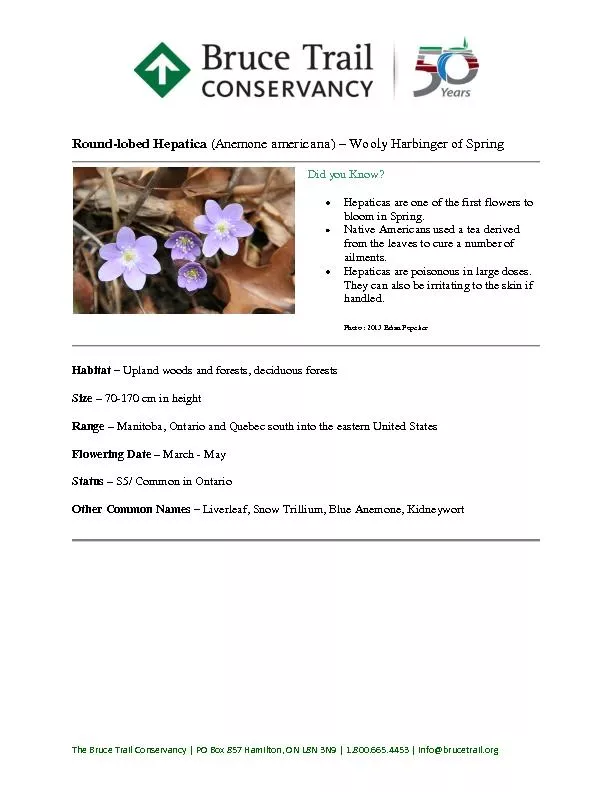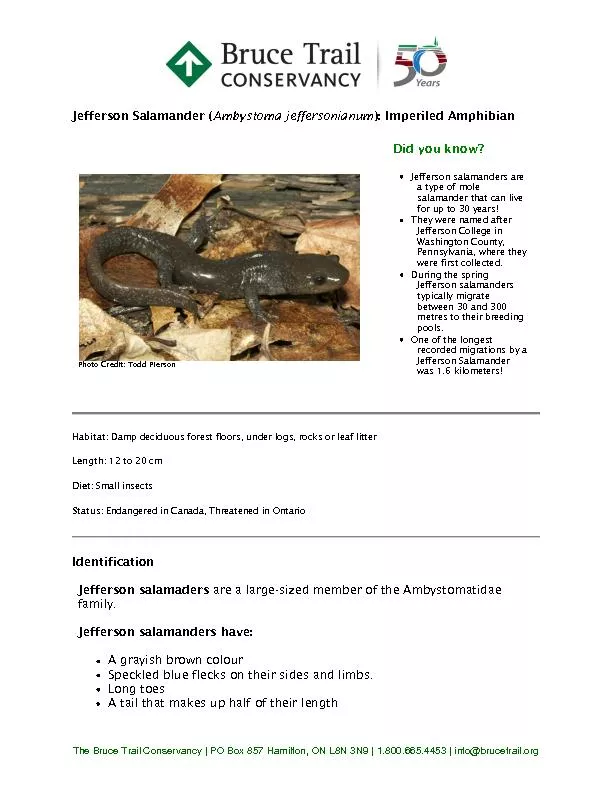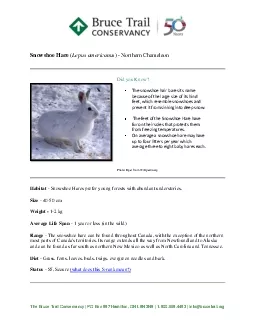PDF-The Bruce Trail Conservancy | PO Box 857 Hamilton, ON L8N 3N9 |
Author : luanne-stotts | Published Date : 2016-06-22
18006654453 infobrucetrailorg Round l obed Hepatica Anemone americana x2013 Wooly Harbinger of Spring Did you Know Hepaticas are one of the first flowers to
Presentation Embed Code
Download Presentation
Download Presentation The PPT/PDF document "The Bruce Trail Conservancy | PO Box 857..." is the property of its rightful owner. Permission is granted to download and print the materials on this website for personal, non-commercial use only, and to display it on your personal computer provided you do not modify the materials and that you retain all copyright notices contained in the materials. By downloading content from our website, you accept the terms of this agreement.
The Bruce Trail Conservancy | PO Box 857 Hamilton, ON L8N 3N9 |: Transcript
Download Rules Of Document
"The Bruce Trail Conservancy | PO Box 857 Hamilton, ON L8N 3N9 |"The content belongs to its owner. You may download and print it for personal use, without modification, and keep all copyright notices. By downloading, you agree to these terms.
Related Documents














